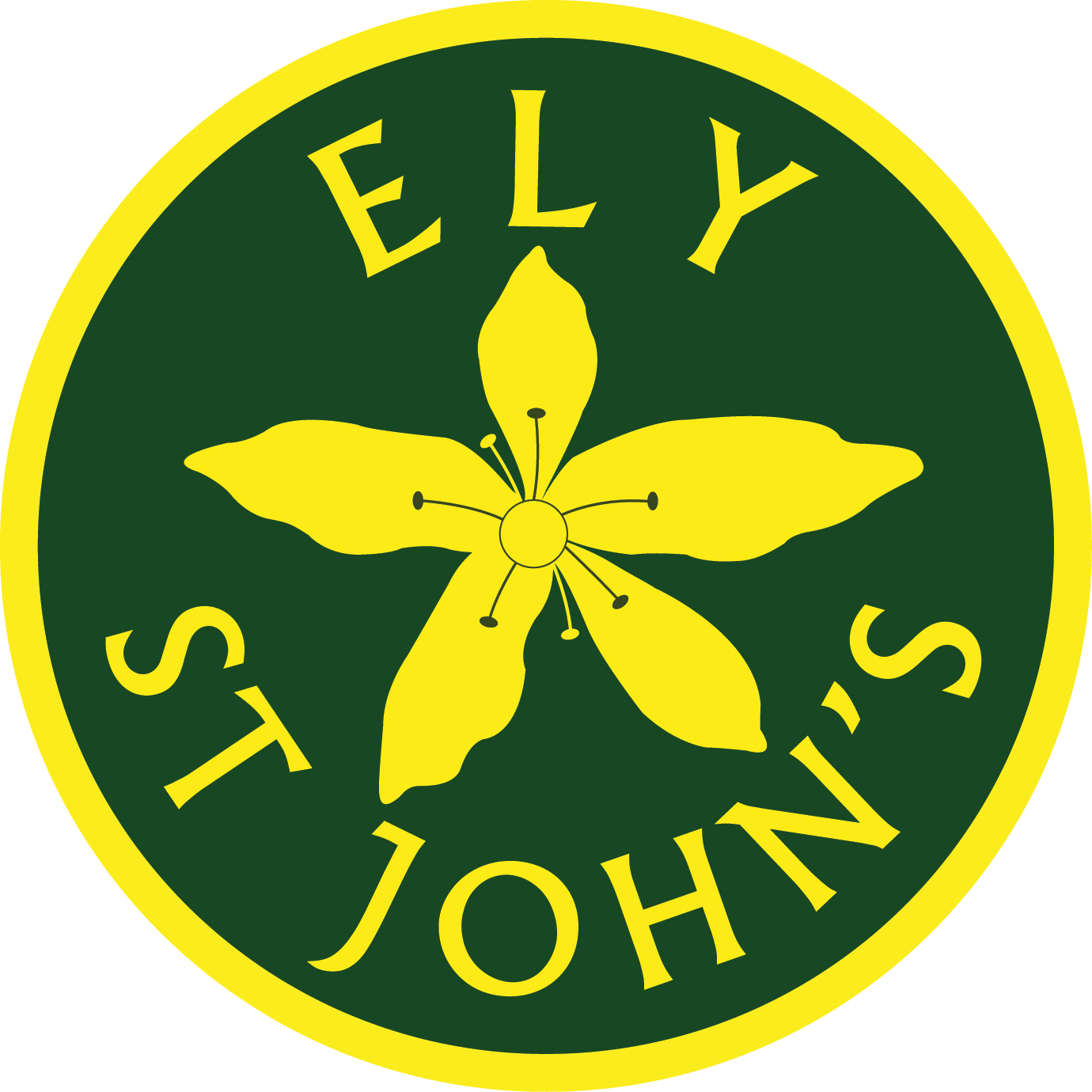Ely St John’s
Maths Curriculum Vision
Principles of our curriculum:
When asked how a child feels about maths, we all want pupils at Ely St John’s to say, “I love maths and I am really good at it!” We aim for all children to feel that they can succeed at maths and that they have the knowledge, skill and resilience to have a go! To develop this sense of being a mathematician, we teach and learn maths every day and spend time on a range of mathematical topics throughout the year.
From EYFS to the end of Key Stage 2, our curriculum builds upon and develops the skills and knowledge required for today and later life. (For details of the EYFS maths curriculum see the EYFS information.) In Key stage 1 and 2, we teach maths topics on: Place value and algebra; calculation (4 operations); measurement; fractions; statistics; shape. Our curriculum is designed to allow children to build on previous experiences and understanding. For example, work on fractions might start out with halves, thirds and quarters in Foundation and Year 1 and extend to fractions, decimals, percentages, ratio and proportion in Year 6.
Intent:
The National Curriculum for Mathematics states that it aims to ensure that all pupils:
• become fluent in the fundamentals of mathematics, including through varied and frequent practice with increasingly complex problems over time, so that pupils develop conceptual understanding and the ability to recall and apply knowledge rapidly and accurately. At Ely St John’s, we aim to build up our fluency with counting, calculating and making connections by following the CLIC Big Maths Progress Drives. This develops children’s ability to learn and remember useful mathematical facts such as number bonds; multiplication and division facts; skip-counting patterns and other number patterns and enables the children to make connections by thinking “It’s nothing new.” Children also practise increasingly efficient mental calculation methods and aim to develop a strong sense of place value.
• reason mathematically by following a line of enquiry, conjecturing relationships and generalisations, and developing an argument, justification or proof using mathematical language At Ely St John’s we ask children to build it/draw it /write it/say it in order to rehearse reasoning ideas; to wonder and notice; to explain their ideas and think about “if this…then that…” We use stem sentences to give children prompts to explore their thinking further and help them to memorise information. We ask, “How do I know?” so that we can think about “I know because…” We ask children to consider common mistakes and different representations and to describe how these help them to think about mathematical ideas. We help children develop ways to check their work. We expect children to learn and use mathematical language.
• can solve problems by applying their mathematics to a variety of routine and non-routine problems with increasing sophistication, including breaking down problems into a series of simpler steps and persevering in seeking solutions
• At Ely St John’s we aim to give children opportunities to practise routine problems and develop approaches that can be applied in different contexts; we aim to build confidence and allow children to meet different kinds of problem solving and try different approaches. For non-routine problems, we encourage children to think what to do first and next, how to use any clues given, how to work systematically, make jottings and collect patterns and know that these patterns can then be used to predict unknown outcomes.
Implementation:
We use a variety of resources and adapt them according to the topic and children in the different groups. We aim to show children a wide range of representations for number and place value e.g. part/ whole models, bar models, number lines, place value counters, dienes base 10 materials etc. and we encourage children to make jottings to bridge the gap between handling materials and writing numbers and symbols on paper. We give children opportunities to work on real life examples. For example, by collecting their own data, by understanding how to tell the time and use money; by measuring in litres, kilogrammes or centimetres or by calculating an area or perimeter. We aim to make links between maths and other subjects e.g. science, PE, geography, DT etc. and to take maths outside when we can. Impact: Our curriculum enables children to develop effective mathematical fluency, reasoning and problem-solving skills and the ability to apply this understanding in different contexts. It gives children access to a secure, long-term, deep and adaptable understanding of maths which can be applied across the wider school curriculum as well as the world outside school. We assess children formally and informally and feedback on children’s work so that we can judge how our children make progress. We build on what they have learnt before. We see that children gain confidence and understanding as they progress through school and we monitor progress in a variety of formal and informal ways. The children have national Key Stage tests in Year 2 and Year 6 and we use the NFER test materials in Years 3, 4 and 5. We also take part in the Year 5 Maths challenge and in the past, we have entered children for the UK Maths Challenge in Year 6 with great success. We liaise with our secondary schools about children’s maths abilities to ensure a smooth transition.
